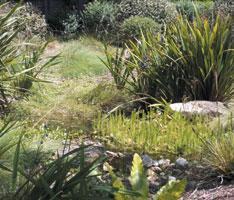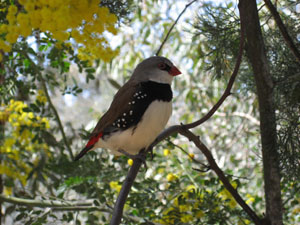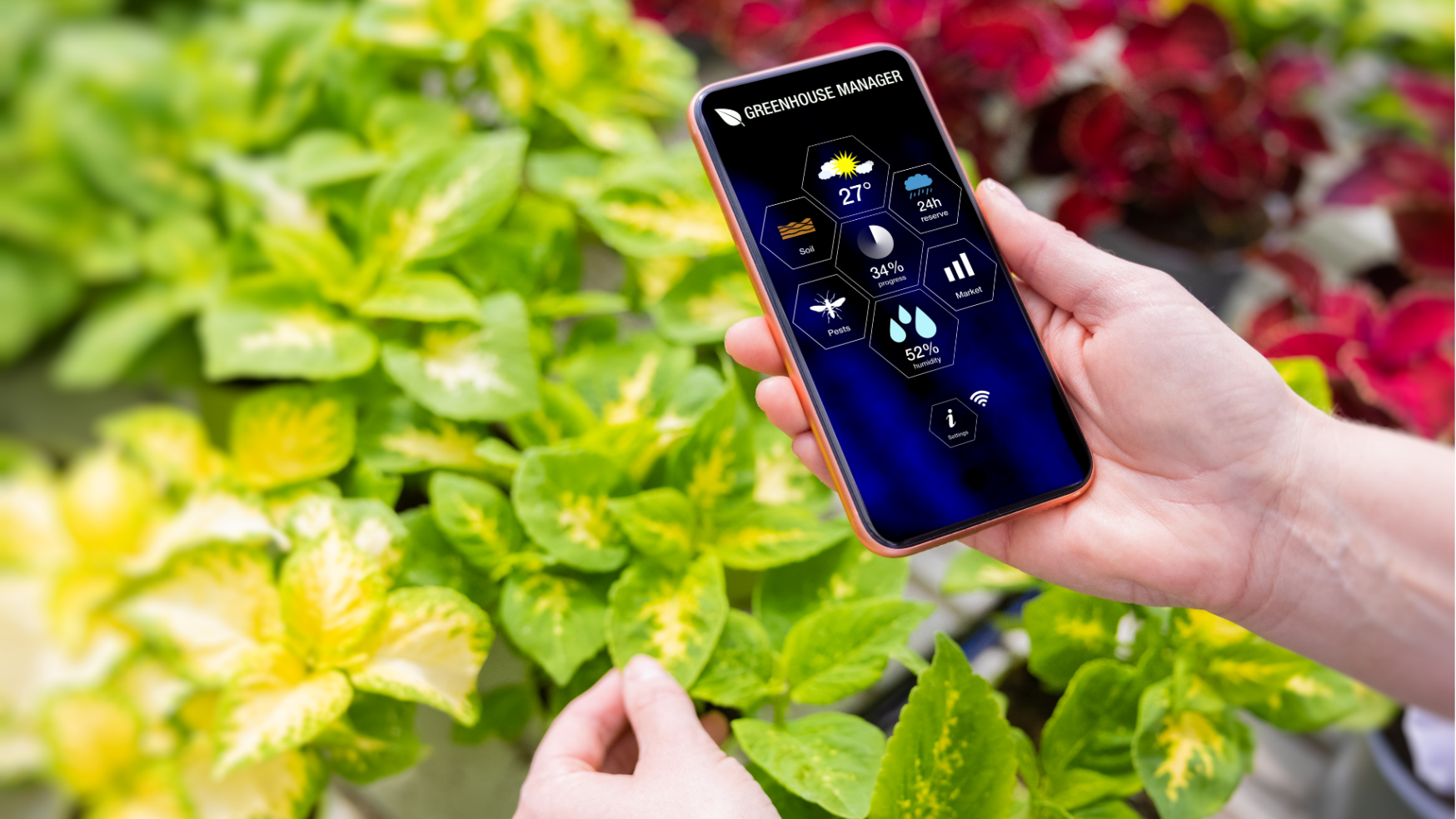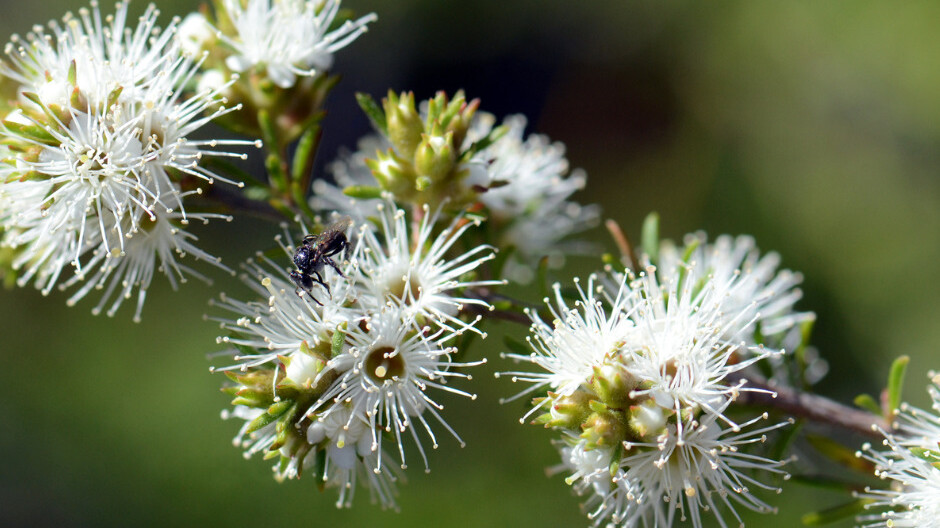As we book-loving gardeners know, there’s always enough room on the shelf for one more. Well, if you haven’t already done so, you should make sure that your next “one more” is a copy of Habitat: A Practical Guide to Creating a Wildlife-Friendly Australian Garden by AB Bishop. And with Australian native plants undergoing something of a renaissance thanks to the general public’s increasing interest in growing indigenous plants as both a means of increasing biodiversity and one step amongst many in the fight against climate change, the release of Habitat… is timely indeed.
Written in a relaxed and straightforward manner, Bishop easily articulates her concerns regarding the loss of public habitat gardens, and provides simple-to-follow suggestions on how mitigate the pernicious affects on the eco-system of urban sprawl, industrialisation and runaway population growth. But rest assured – instead of dwelling on the darkness or viewing our contemporary ways as a harbinger of the end of days, Bishop approaches these aforementioned pernicious affects as problems that can be solved with a bit of elbow grease and a smile, and as obstacles that can be overcome through togetherness and the old adage of “one step at a time.” Ultimately, Habitat… is no vitriolic polemic on the “evils” of modern life but a kind-of guidebook showing us how we can do our part, no matter how small, in making the world a better place.
 Part 1 – Biodiversity for Life – is a thoughtful and almost philosophical beginning to the book, providing an in-depth explanation of not only habitat gardening, but also biodiversity, food chains, ecology and natural philosophy, in order to show how ecosystems don’t exist in isolation but are instead part of an interconnected web that stretches from coast to coast and even further. It is an excellent and inspiring section, especially because Bishop approaches the topic not just from the perspectives outlined above, but also from a human-centric one. In essence, as Bishop argues, habitat gardens aren’t only important to the natural world but also to our own lives – they are one of the few garden “types” that we can create which encourage and support biophilia (a term coined by German psychologist Erich Fromm in the 1960s, covering our innate tendency to connect with nature and other forms of life).
Part 1 – Biodiversity for Life – is a thoughtful and almost philosophical beginning to the book, providing an in-depth explanation of not only habitat gardening, but also biodiversity, food chains, ecology and natural philosophy, in order to show how ecosystems don’t exist in isolation but are instead part of an interconnected web that stretches from coast to coast and even further. It is an excellent and inspiring section, especially because Bishop approaches the topic not just from the perspectives outlined above, but also from a human-centric one. In essence, as Bishop argues, habitat gardens aren’t only important to the natural world but also to our own lives – they are one of the few garden “types” that we can create which encourage and support biophilia (a term coined by German psychologist Erich Fromm in the 1960s, covering our innate tendency to connect with nature and other forms of life).
 Part 2 – Backyard Habitat – treads a much more traditional gardening book path, covering everything – EVERYTHING – you need to know to create and sustain your own habitat garden. It is an exhaustive “how-to” guide, and consists of individual chapters focussing on specific aspects of habitat gardens, including planning, plant selection, insects, reptiles and amphibians, birds and mammals. But wait, there’s more – Bishop also includes a chapter on specific small-scale projects that can be included in a habitat garden (nesting boxes, insect hotels, frog ponds, lizard lounges), and concludes with a chapter on Australia’s biodiversity hotspots (the country’s 15 most fragile ecosystems).
Part 2 – Backyard Habitat – treads a much more traditional gardening book path, covering everything – EVERYTHING – you need to know to create and sustain your own habitat garden. It is an exhaustive “how-to” guide, and consists of individual chapters focussing on specific aspects of habitat gardens, including planning, plant selection, insects, reptiles and amphibians, birds and mammals. But wait, there’s more – Bishop also includes a chapter on specific small-scale projects that can be included in a habitat garden (nesting boxes, insect hotels, frog ponds, lizard lounges), and concludes with a chapter on Australia’s biodiversity hotspots (the country’s 15 most fragile ecosystems).
By dividing Habitat… into two sections, Bishop offers readers new to habitat gardening the chance to thoroughly understand their importance to both the environment in general and native flora and fauna in particular, before being plunged head-first into the “nuts and bolts” of creating your own. It is an extraordinary book containing a wealth of fascinating and detailed information, and is peppered with individual garden case studies, photographs, tables and maps. No matter whether you’re new to the field of habit gardening or have prior experience, you’ll find something within Habitat: A Practical Guide to Creating a Wildlife-Friendly Australian Garden to benefit both your garden and your life.
Related Articles:
Citizen Science: A Pathway to Gardening Success and Biodiversity Conservation
In recent years, the realm of science has experienced a remarkable transformation, one that invites people from all walks of life to participate…
Wildflower gardens – What’s the buzz about?
In the quest for sustainable and environmentally conscious practices, gardening enthusiasts and nature lovers alike are turning to a time-tested…
Climate Resilient Gardening
Introduction Gardeners in Australia are facing a race against time as they experience the growing impact of climate change in their own gardens. The…
Strawberries
I adore strawberries (Fragaria sp.), and one of my earliest memories is a birthday cake absolutely heaving under the weight of a sack full of home…




